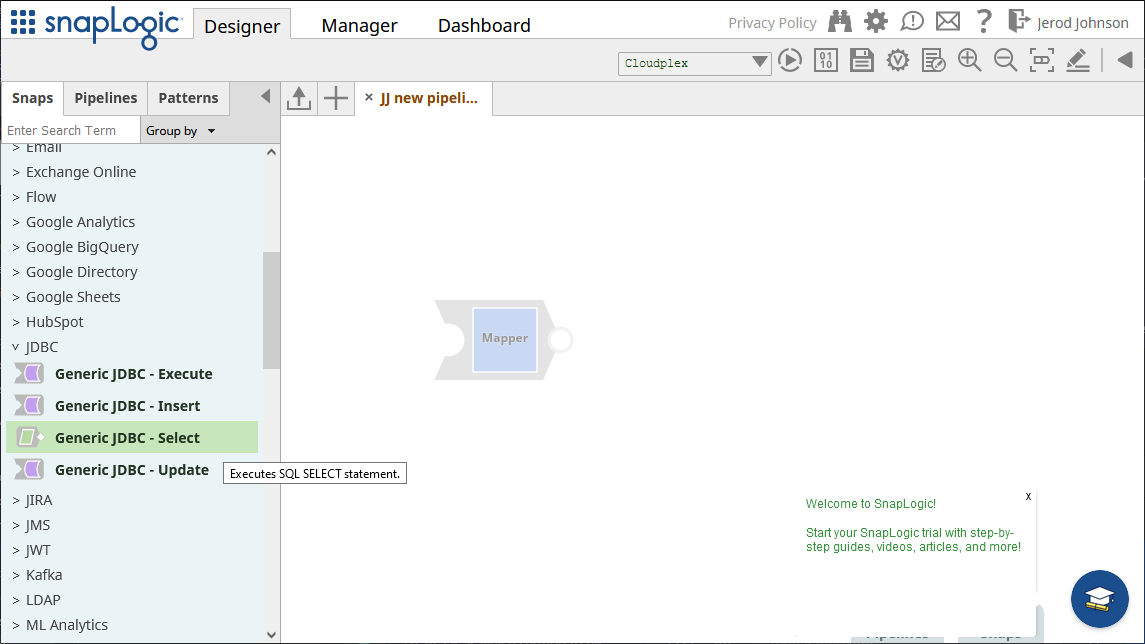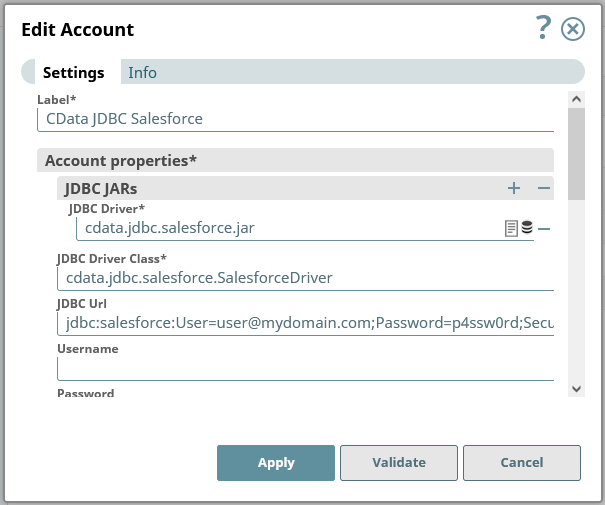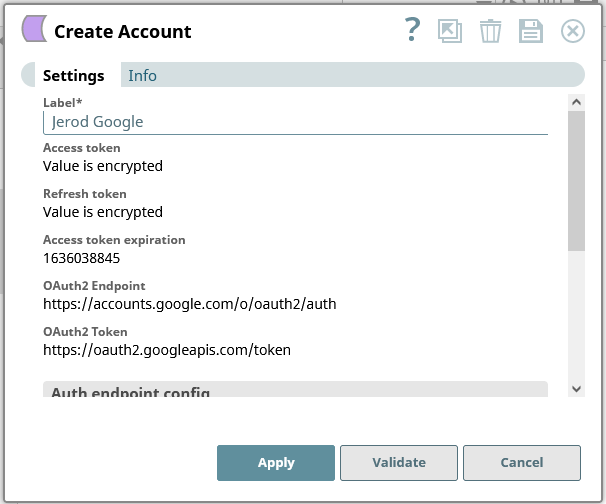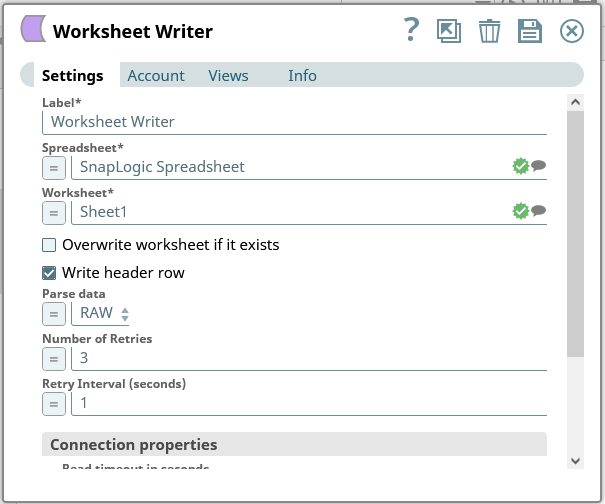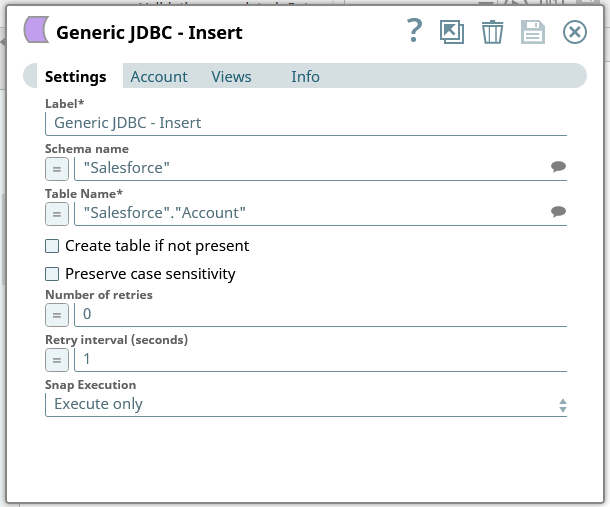Model Context Protocol (MCP) finally gives AI models a way to access the business data needed to make them really useful at work. CData MCP Servers have the depth and performance to make sure AI has access to all of the answers.
Try them now for free →Integrate SharePoint with External Services using SnapLogic
Use CData JDBC drivers in SnapLogic to integrate SharePoint with External Services.
SnapLogic is an integration platform-as-a-service (iPaaS) that allows users to create data integration flows with no code. When paired with the CData JDBC Drivers, users get access to live data from more than 250+ SaaS, Big Data and NoSQL sources, including SharePoint, in their SnapLogic workflows.
With built-in optimized data processing, the CData JDBC Driver offers unmatched performance for interacting with live SharePoint data. When platforms issue complex SQL queries to SharePoint, the driver pushes supported SQL operations, like filters and aggregations, directly to SharePoint and utilizes the embedded SQL engine to process unsupported operations client-side (often SQL functions and JOIN operations). Its built-in dynamic metadata querying lets you work with SharePoint data using native data types.
About SharePoint Data Integration
Accessing and integrating live data from SharePoint has never been easier with CData. Customers rely on CData connectivity to:
- Access data from a wide range of SharePoint versions, including Windows SharePoint Services 3.0, Microsoft Office SharePoint Server 2007 and above, and SharePoint Online.
- Access all of SharePoint thanks to support for Hidden and Lookup columns.
- Recursively scan folders to create a relational model of all SharePoint data.
- Use SQL stored procedures to upload and download documents and attachments.
Most customers rely on CData solutions to integrate SharePoint data into their database or data warehouse, while others integrate their SharePoint data with preferred data tools, like Power BI, Tableau, or Excel.
For more information on how customers are solving problems with CData's SharePoint solutions, refer to our blog: Drivers in Focus: Collaboration Tools.
Getting Started
Connect to SharePoint in SnapLogic
To connect to SharePoint data in SnapLogic, download and install the CData SharePoint JDBC Driver. Follow the installation dialog. When the installation is complete, the JAR file can be found in the installation directory (C:/Program Files/CData/CData JDBC Driver for SharePoint/lib by default).
Upload the SharePoint JDBC Driver
After installation, upload the JDBC JAR file to a location in SnapLogic (for example, projects/Jerod Johnson) from the Manager tab.
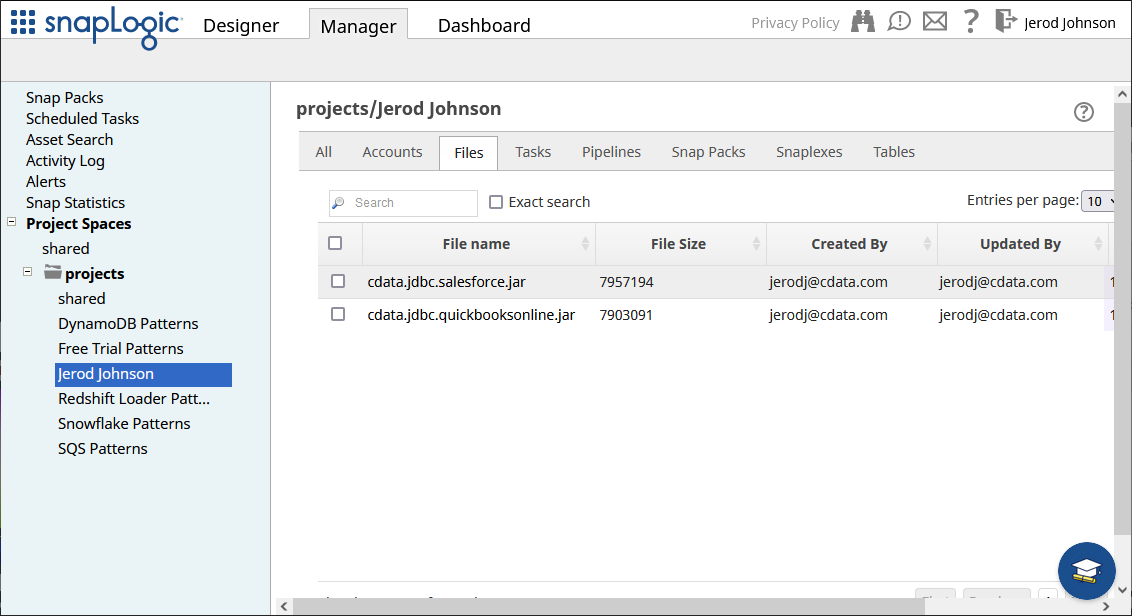
Configure the Connection
Once the JDBC Driver is uploaded, we can create the connection to SharePoint.
- Navigate to the Designer tab
- Expand "JDBC" from Snaps and drag a "Generic JDBC - Select" snap onto the designer
![Adding a Generic JDBC snap onto the designer]()
- Click Add Account (or select an existing one) and click "Continue"
- In the next form, configure the JDBC connection properties:
- Under JDBC JARs, add the JAR file we previously uploaded
- Set JDBC Driver Class to cdata.jdbc.sharepoint.SharePointDriver
Set JDBC URL to a JDBC connection string for the SharePoint JDBC Driver, for example:
jdbc:sharepoint:User=myuseraccount;Password=mypassword;Auth Scheme=NTLM;URL=http://sharepointserver/mysite;SharePointEdition=SharePointOnPremise;RTK=XXXXXX;
NOTE: RTK is a trial or full key. Contact our Support team for more information.
![Configuring a connection (Salesforce is shown)]()
Built-In Connection String Designer
For assistance in constructing the JDBC URL, use the connection string designer built into the SharePoint JDBC Driver. Either double-click the JAR file or execute the jar file from the command-line.
java -jar cdata.jdbc.sharepoint.jar
Fill in the connection properties and copy the connection string to the clipboard.
Set the URL property to the base SharePoint site or to a sub-site. This allows you to query any lists and other SharePoint entities defined for the site or sub-site.
The User and Password properties, under the Authentication section, must be set to valid SharePoint user credentials when using SharePoint On-Premise.
If you are connecting to SharePoint Online, set the SharePointEdition to SHAREPOINTONLINE along with the User and Password connection string properties. For more details on connecting to SharePoint Online, see the "Getting Started" chapter of the help documentation
![Using the built-in connection string designer to generate a JDBC URL (Salesforce is shown.)]()
- After entering the connection properties, click "Validate" and "Apply"
Read SharePoint Data
In the form that opens after validating and applying the connection, configure your query.
- Set Schema name to "SharePoint"
- Set Table name to a table for SharePoint using the schema name, for example: "SharePoint"."MyCustomList" (use the drop-down to see the full list of available tables)
- Add Output fields for each item you wish to work with from the table
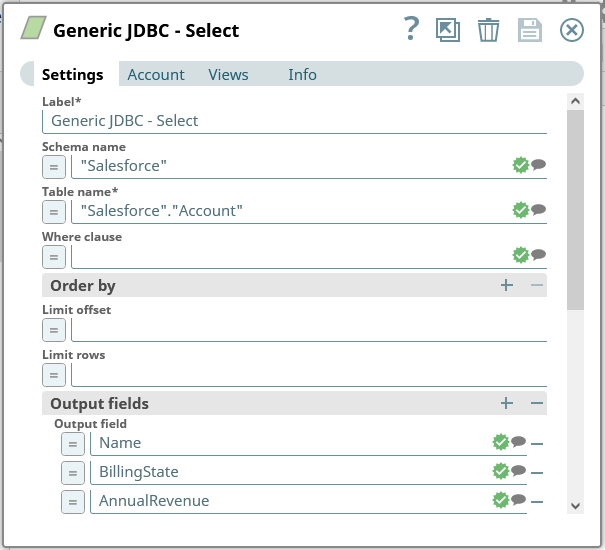
Save the Generic JDBC - Select snap.
With connection and query configured, click the end of the snap to preview the data (highlighted below).

Once you confirm the results are what you expect, you can add additional snaps to funnel your SharePoint data to another endpoint.
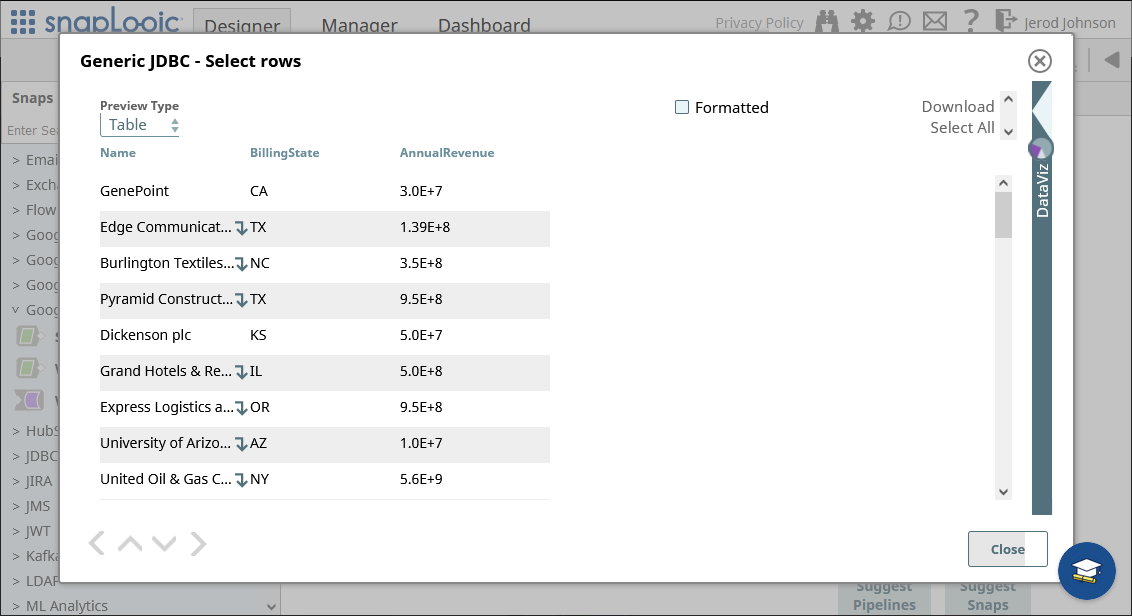
Piping SharePoint Data to External Services
For this article, we will load data in a Google Spreadsheet. You can use any of the supported snaps, or even use a Generic JDBC snap with another CData JDBC Driver, to move data into an external service.
- Start by dropping a "Worksheet Writer" snap onto the end of the "Generic JDBC - Select" snap.
- Add an account to connect to Google Sheets
![Connecting to Google]()
- Configure the Worksheet Writer snap to write your SharePoint data to a Google Spreadsheet
![Writing to a Google Spreadsheet]()
You can now execute the fully configured pipeline to extract data from SharePoint and push it into a Google Spreadsheet.
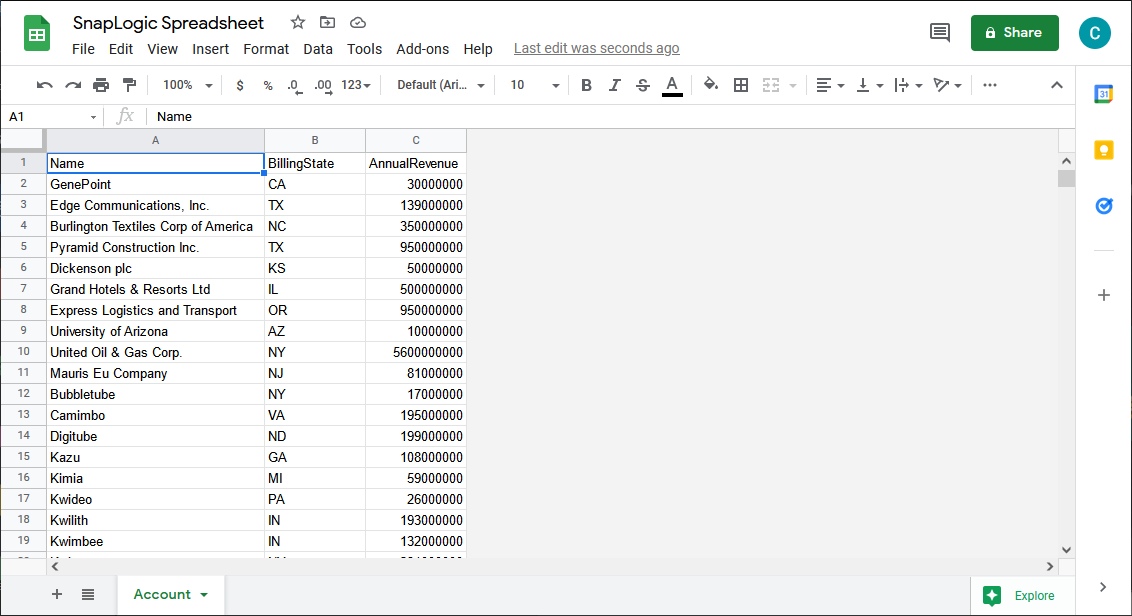
Piping External Data to SharePoint
As mentioned above, you can also use the JDBC Driver for SharePoint in SnapLogic to write data to SharePoint. Start by adding a Generic JDBC - Insert or Generic JDBC - Update snap to the dashboard.
- Select the existing "Account" (connection) or create a new one
- Configure the query:
- Set Schema name to "SharePoint"
- Set Table name to a table for SharePoint using the schema name, for example: "SharePoint"."MyCustomList" (use the drop-down to see the full list of available tables)
![Configuring a INSERT snap (Salesforce is shown)]()
- Save the Generic JDBC - Insert/Update snap
At this point, you have configured a snap to write data to SharePoint, inserting new records or updating existing ones.
More Information & Free Trial
Using the CData JDBC Driver for SharePoint you can create a pipeline in SnapLogic for integrating SharePoint data with external services. For more information about connecting to SharePoint, check at our CData JDBC Driver for SharePoint page. Download a free, 30 day trial of the CData JDBC Driver for SharePoint and get started today.

